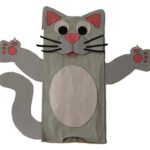When it comes to maintaining your machinery, the topic of filters often sparks debate, especially the idea of using aftermarket alternatives to Original Equipment Manufacturer (OEM) branded filters. The question frequently arises: why pay more for a filter just because it carries the brand name of your equipment, like Caterpillar (Cat)? This leads many to seek out a Cat Filter Cross Reference to find seemingly identical, yet cheaper, options from well-known aftermarket brands. After all, it’s a common perception that companies like Cat, Kubota, or Ford don’t actually manufacture filters themselves. This is true; they contract filter production to specialized manufacturers. However, dismissing OEM filters as simply rebranded, overpriced versions of aftermarket filters is an oversimplification that can potentially compromise the longevity and performance of your valuable equipment.
The argument for using aftermarket filters often rests on the idea that filters from brands like Wix, Fram, Hastings, and Purolator are made to the same specifications as OEM filters, just without the branded packaging. Proponents suggest that these major aftermarket brands reverse-engineer OEM filters to create equivalent products, often at a significantly lower price point. While there’s truth to the quality reputation of these aftermarket brands, the “same spec” assumption deserves closer scrutiny. Consider a direct comparison between a Fram and a Wix filter. Superficially, they might appear to meet the same specifications. Yet, a closer inspection often reveals differences, such as a noticeably thicker filter case in the Wix filter. In demanding environments, like marine or salt-exposed settings, this seemingly minor difference can translate to greater durability and resistance to corrosion. Instances of Fram filters rusting through in such conditions are not uncommon, highlighting that “same spec” on paper doesn’t always equate to identical real-world performance.
This principle extends to OEM branded filters. Let’s take Kubota as an example. While Kubota might contract a company like Wix to produce their filters, Kubota’s specifications for these filters may go beyond the standard requirements of a generic Wix “will-fit” replacement. Kubota’s priority isn’t hitting a specific price point to compete in the aftermarket; their focus is on ensuring the filter provides the optimal protection for their engines. This might involve requesting specific filter media, unique filter media construction, or specialized anti-drain back valves that Wix might deem unnecessary for their standard aftermarket offerings, or simply cannot include at the price point they aim for in the competitive aftermarket. Therefore, even if an aftermarket filter is produced on the same production line as an OEM filter, subtle but crucial differences in materials and construction, driven by the OEM’s specific demands, can exist.
The pursuit of price competitiveness in the aftermarket filter industry can sometimes lead to compromises in component quality. A concerning example is found in late-model Ford diesels. Some aftermarket filters, marketed as “same spec as OEM” by reputable brands, have been observed using cheaper sealing materials in their cartridges. This cost-saving measure has resulted in the sealing material flaking off and causing serious issues by clogging the high-pressure fuel injection systems. This illustrates a critical point: while aftermarket brands strive to offer cost-effective alternatives, the drive to be price-competitive can sometimes lead to prioritizing affordability over absolute performance and long-term reliability.
The same philosophy applies to engine oils. While “oil is oil” in its base form, the crucial differences lie in the additive packages formulated by each manufacturer. These additive packages are tailored to address specific engine needs and operating conditions. For instance, two-stroke oils meeting the TCW-III specification might seem interchangeable. However, a closer look reveals that cheaper oils often just meet the minimum TCW-III standards, while premium oils, like Yamaha 2-M, contain enhanced additive packages for superior engine protection. Interestingly, manufacturers of equipment using these “minimum spec” oils often recommend additional fuel additives, effectively bringing the total cost closer to that of the premium oil, suggesting that cutting corners on consumables can be a false economy.
The bottom line is that while seeking a cat filter cross reference for cost savings is understandable, it’s vital to look beyond the surface of “same spec” claims. OEM filters, while potentially pricier upfront, are often engineered to meet the specific and often rigorous demands of the equipment manufacturer. As a MerCruiser parts advertisement from years ago aptly illustrated with water pump impellers: an aftermarket part failure might just get you a replacement part, while an OEM failure could be the difference between a minor inconvenience and costly engine damage. When it comes to filters and other critical consumables for your machinery, remember the adage: you often get what you pay for. Choosing quality components, even if they come at a slightly higher price, can translate to long-term savings and peace of mind by safeguarding your valuable equipment from potential damage and downtime.

